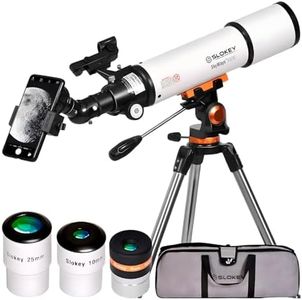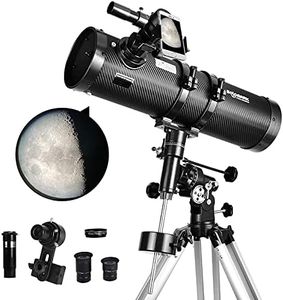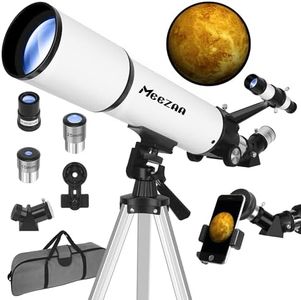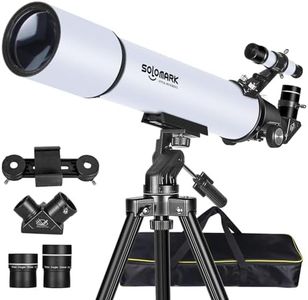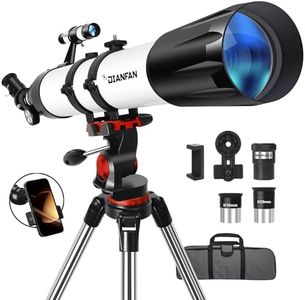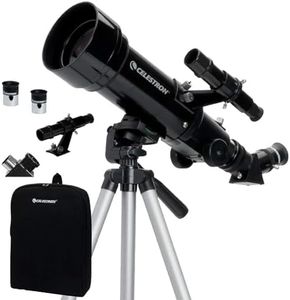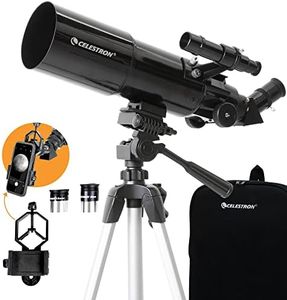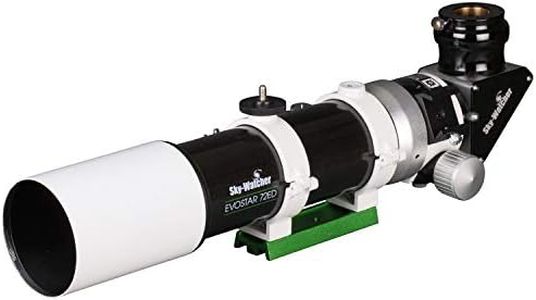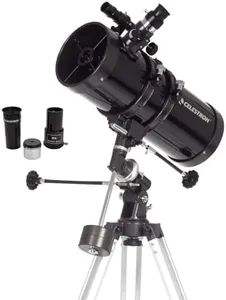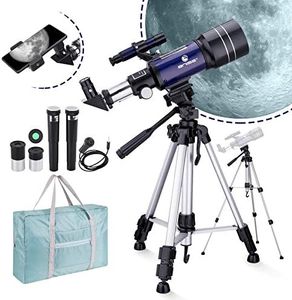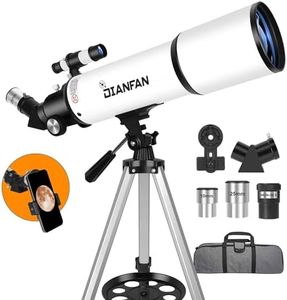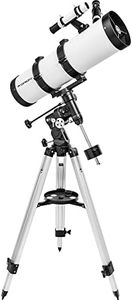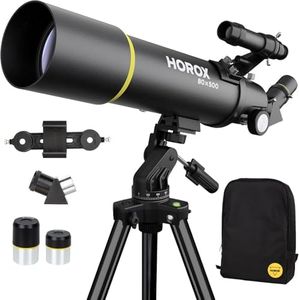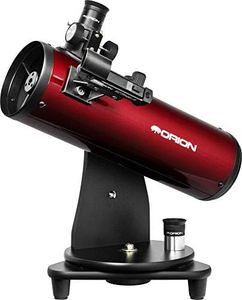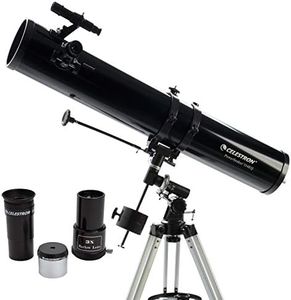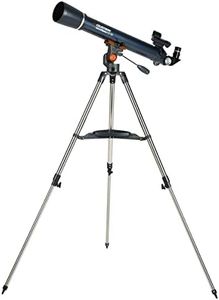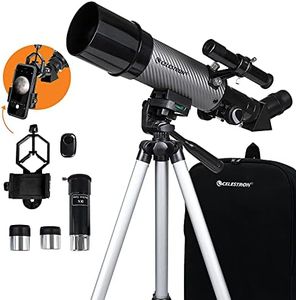Buying Guide for the Best Telescopes For Beginners
Choosing your first telescope can be exciting but also a bit overwhelming with all the options available. The key is to find a telescope that matches your interests, is easy to use, and encourages you to explore the night sky. As a beginner, you want something that is simple to set up, portable enough to move around, and powerful enough to show you interesting celestial objects. Understanding the main features will help you make a confident choice and get the most enjoyment from your stargazing experience.ApertureAperture refers to the diameter of the telescope's main lens or mirror, and it is one of the most important specs because it determines how much light the telescope can gather. More light means you can see fainter objects and more detail. Aperture sizes for beginner telescopes usually range from about 60mm to 130mm. Smaller apertures (60-80mm) are lighter and easier to handle, great for looking at the Moon and bright planets. Medium apertures (90-130mm) let you see more detail and some deep-sky objects like star clusters and nebulae. If you want to see more than just the brightest objects, aim for the largest aperture you can comfortably handle and transport.
Focal LengthFocal length is the distance from the telescope's lens or mirror to the point where it forms an image. This affects the magnification and field of view. Shorter focal lengths (under 700mm) give you a wider view, which is great for scanning the sky and viewing large objects like star clusters. Longer focal lengths (over 700mm) provide higher magnification, which is better for looking at planets and the Moon in detail. Think about what you want to observe most: wide views for general sky watching, or close-ups of planets and the Moon.
Mount TypeThe mount is what holds your telescope steady and allows you to point it at different parts of the sky. There are two main types: alt-azimuth and equatorial. Alt-azimuth mounts move up/down and left/right, making them simple and intuitive for beginners. Equatorial mounts are designed to follow the motion of the stars, which is helpful for longer observations or astrophotography, but they can be more complex to set up. If you want easy, quick viewing, go for an alt-azimuth mount. If you’re interested in learning more about astronomy and tracking objects, consider an equatorial mount.
PortabilityPortability is about how easy it is to move and set up your telescope. Smaller, lighter telescopes are easier to carry outside or take to a dark-sky location, but they may have smaller apertures. Larger telescopes can show you more, but they can be heavy and take longer to set up. If you plan to observe from your backyard, size may not matter as much. If you want to travel with your telescope, look for something compact and lightweight.
Ease of UseEase of use covers how simple the telescope is to assemble, align, and operate. Some telescopes are ready to use out of the box, while others require more setup and adjustment. For beginners, a telescope that is easy to put together and doesn’t need complicated alignment is best. Look for models with clear instructions and minimal parts. If you’re new to astronomy, a simple design will help you spend more time observing and less time troubleshooting.
Included AccessoriesAccessories like eyepieces, finderscopes, and smartphone adapters can enhance your experience. Eyepieces determine the magnification, and having a couple of different ones lets you switch between wide and close-up views. A finderscope helps you aim the telescope at objects in the sky. Some beginner telescopes come with extra items like star charts or apps. Consider what’s included and whether you’ll need to buy anything else to get started. For beginners, having a few basic accessories included can make your first nights of stargazing much easier.
